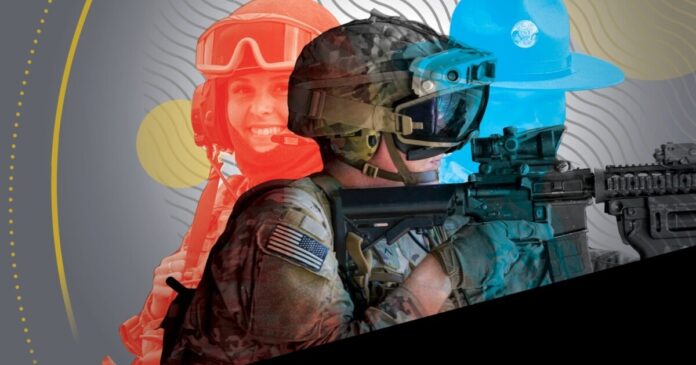The US Army has released its outline of what it expects to look like in 2030 after it has reorganized itself to incorporate the lessons learned after 30 years of post-Cold-War conflicts and revolutionary advances in military technology.
One of the things that should be obvious about the military, but isn’t, is that it undergoes a seismic change about once every generation. This may seem like a simple truism, but is important to understand. Whatever one’s opinion of military power is, it plays such an important role in our world that we need to understand what the military actually is, instead of relying on preconceptions that could be half a century out of date.
During the Cold War, the US Army was based on the doctrine of the “Big 5,” which was an army built around main battle tanks, armored personnel vehicles, attack and utility helicopters, and anti-missile systems, as a part of a strategy to counter the massive armed forces of the Warsaw Pact.
After the fall of the Soviet Union, the US Army turned to a more mobile, integrated force that was better suited to low-level insurgencies, regional wars, and anti-terrorist operations. At the same time, technology had changed with the introduction of the World Wide Web, drones, cyberwarfare, and increasingly effective precision weapon systems through the 1900s and into the 21st century.

Along with this have been the lessons learned by conflicts in the Middle East and the emerging threats of Russia and China that have required rethinking both tactics and strategies.
In its current plan for realignment, the US Army is looking to develop a force that is not only able to integrate with the other branches of the American military to act as a single unit, but also uses advanced sensors and long-range weapons backed by increasingly sophisticated cyberwarfare systems from widely dispersed locations to engage threats.
The idea behind this is to provide a potential enemy with as nebulous and stealthy a target as possible while being able to concentrate firepower at the time and place of the field commander’s choosing. This will involve not only land assets, but also those based in the air, at sea, in orbit, and in cyberspace all working together.
In addition to this, the Army sees 2030 as a time when virtual reality and simulations will provide soldiers in large and small units with experience in operating in a wide variety of environments and scenarios at low cost and low risk. The latter is particularly important because the intense training US soldiers undergo often results in unwanted casualties.
Another way the Army is changing is by placing greater emphasis on larger units. For the past 30 years, the Army has been based on brigades of about 4,000 soldiers led by a colonel. The new plan is to rely on divisions that are made up of several brigades that are able to handle large-scale conflicts and will incorporate lessons learned in Iraq and Afghanistan. This includes forward positioning troops and equipment to make it difficult for an adversary to predict US actions.
Added to this, the Army of 2030 will rely more heavily on crewed and uncrewed sensors to monitor the battlefield, as well as faster, more survivable vehicles that will likely be robotic and field more firepower than current equivalent systems. New weapons will include hypersonic missiles and high-powered laser and microwave weapons for mobile short-range air defenses.
Backing all this up will be a new logistical chain for supply and support that will take advantage of lighter, more climate resilient vehicles and structures.
Source: US Army



